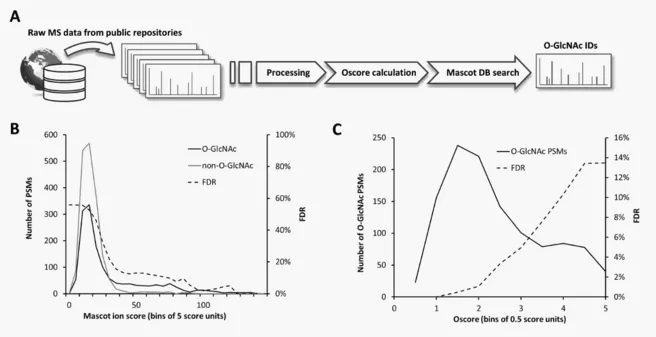In the present study, we assessed if, and to which extent, O-GlcNAc-modified proteins can be discovered from existing large-scale proteome data sets. To this end, we conceived a straightforward O-GlcNAc identification strategy based on our recently developed Oscore software that automatically analyzes tandem mass spectra for the presence and intensity of O-GlcNAc diagnostic fragment ions. Using the Oscore, we discovered hundreds of O-GlcNAc peptides not initially identified in these studies, and most of which have not been described before. Merely re-searching this data extended the number of known O-GlcNAc proteins by almost 100 suggesting that this modification exists even more widely than previously anticipated and the modification is often sufficiently abundant to be detected without enrichment. However, a comparison of O-GlcNAc and phospho-identifications from the very same data indicates that the O-GlcNAc modification is considerably less abundant than phosphorylation. The discovery of numerous doubly modified peptides (i. e. peptides with one or multiple O-GlcNAc or phosphate moieties), suggests that O-GlcNAc and phosphorylation are not necessarily mutually exclusive, but can occur simultaneously at adjacent sites.
NEWS - ARCHIVE
Discovery of O-GlcNAc-modified proteins in published large-scale proteome data
